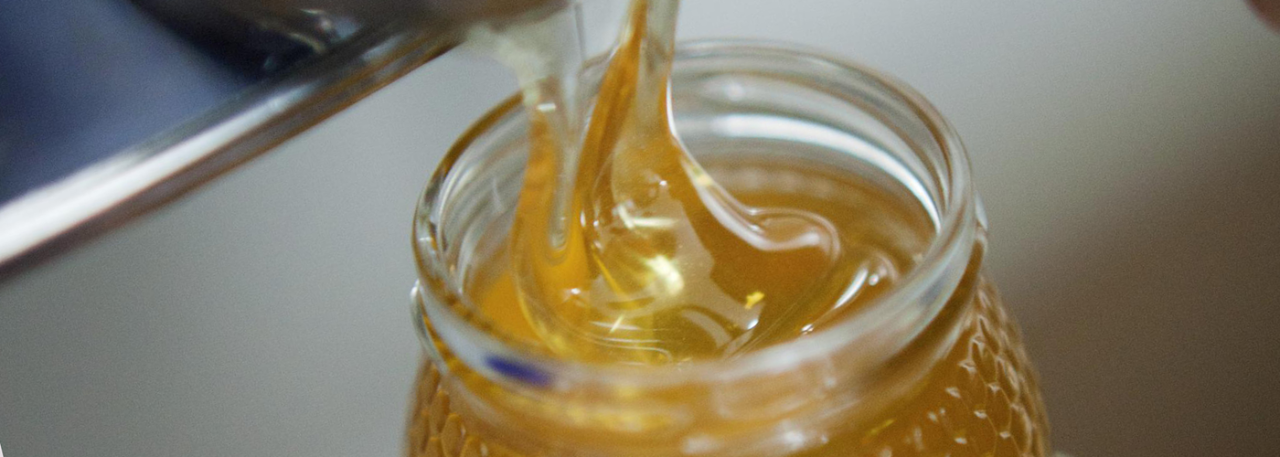.png.transform/rendition-xs/image_image%20(1).png)
Miel de Liébana PDO
‘Miel de Liébana’ is a honey made by honeybees in the comarca (county) of Liébana from the nectar of flowers or secretions from the living parts of plants that grow in Liébana’s ecosystems, which the bees harvest, transform, combine with specific substances they produce themselves, deposit, dehydrate, store and leave to ripen in the combs of the beehive.
The varieties of honey that are produced in the area and may be covered by the Protected Designation of Origin ‘Miel de Liébana’ are:
- Honeydew honey: made from oak and holm oak honeydew, and from the nectar of Erica spp. (heathers), Rubus sp. (blackberry) and a variable percentage of pollens found in Liébana’s flora.
- Single-flower heather honey: made from the nectar of the following species: Erica cinerea, Erica vagans, Erica tetralix, Erica cirialis and Calluna vulgaris (ling heather).
Tasting notes
Organoleptic characteristics of honeydew honey:
- Physical state: Fluid consistency, with a very low crystallisation tendency.
- Colour: Very dark amber, sometimes almost black, with black-brown tones, reflective sheen.
Aroma: Woody with low intensity and persistence. With a light malty component.
- Taste: With distinct salty components which offset the sweetness typical of all honeys. Organoleptic characteristics of heather honey:
Physical state: Pasty consistency. Medium crystallisation tendency (fine granulation).
- Colour: Amber to very dark amber with reddish-brown tones. If it becomes very cold when stored during the winter the colour may turn to light amber.
Aroma: Heavy floral with average intensity and persistence.
Taste: Slightly bitter and persistent, with very pronounced salty notes.
Other notes
They are fresh honeys. They are intact honeys which have not undergone intense heat treatment. They must not be heated to temperatures above 40 °C. This ensures that they retain the character conferred on them by the area’s bees and its flora.
Physico-chemical characteristics:
Ripeness:
- Sucrose content: maximum 5 % (5 g/100 g)
- Moisture: maximum 18.6 %
Degree of freshness (determined after production):
- Hydroxymethylfurfural (HMF) < 20 mg/kg
- Diastase activity: 25–55 Schade scale
Deterioration:
- Free acidity: less than 50 meq/kg
Purity:
- Water-insoluble solids: maximum 0.1 g/100 g
- Foreign matter: without residues, filtered through a < 0,2 mm mesh sieve
Pollen characteristics
The pollen spectrum of PDO ‘Miel de Liébana’ honeys must mirror that of the area’s vegetation, which mainly consists of the following families: Leguminosae, Ericaceae, Rosaceae, Fagaceae, Plantaginaceae, Asteraceae and Boraginaceae. In any event, the pollen of Eucalyptus sp. (eucalyptus), Helianthus annuus (sunflower), Olea europaea (olive), Cistus ladanifer (brown-eyed rockrose), Thymus sp. (thyme), Lavandula stoechas (topped lavender) and Rosmarinus officinalis (rosemary) combined may not exceed 5 % of the total pollen spectrum-
Production / Processing method
Liébana’s beekeepers are continuing a tradition that goes back centuries. The beekeeping practices that the beekeepers have inherited from their forebears are:
- Use of wooden beehives.
- The hives are moved from low-lying areas to areas at higher altitudes (transhumance) in order to fully exploit the potential of the comarca’s melliferous flora.
- The bees are not artificially fed while they are making honey.
- The bees are removed by the traditional brushing method.
- The honey is extracted by cold centrifugation or decantation of the combs, never by pressure.
- Smokers are still used and natural, traditional plant products – mixtures of hay produced in the area and oak (Quercus spp.) and laurel (Laurus nobilis) leaves – are used as fuel, in order to produce cold, aromatic smoke which does not alter the characteristics of the honey.
- The temperature of the honey does not rise above 40 °C at any stage of the production process and pasteurisation is prohibited.
- Most of the swarms used are produced in the comarca and adapted to the area.
The product must be packaged in transparent, colourless glass containers which are hermetically closed to prevent the loss of natural aromas and the entry of odours, moisture, etc. and have a seal to guarantee that they have not been opened.
The packaged honey must be thick or crystallised. Bulk sales are prohibited.
Geography / Relief and climate
The comarca of Liébana is in the heart of the Cantabrian Mountains. Naturally defined by its morphology and physiognomy, it is enclosed by some of Cantabria’s highest peaks, which form a natural boundary. These extend towards the centre, forming four deep, narrow, steep-sided valleys, which converge at Potes, the geographical and administrative centre. It is circular in shape, a huge caldera surrounded by massive limestone walls, bordered by the Picos de Europa. Altitudes are lowest in the centre, at around 300 m.a.s.l., increasing to 2 600 m.a.s.l. at the periphery.
Because of its orographic complexity, Liébana has its own distinct microclimate, which makes it a Mediterranean enclave within a region that is under the influence of an Atlantic climate.
In Liébana the average temperature ranges from 21 °C maximum to 8 °C minimum; frequent frosts are very common for three or four months a year. It is a very wet area, with an annual average of 2 000 litres per square metre on the summits but only 700 litres in the centre of the valley, where it can be dry for up to three months.
Liébana has a high nature value, which is particularly well preserved and has been changed little by human activity. Tree cover is 41 % and in addition there are now seven protected areas covering more than 32 % of the territory.
All these factors combine to make the area home to an extraordinary variety of plants, and types of forest and flora that flourish in Atlantic climates coexist with typically Mediterranean species.
Regulatory Council
Consejo Regulador de la DOP Miel de Liébana
Oficina de Calidad Alimentaria (ODECA)
C/ Héroes 2 de Mayo, 27
39600 Muriedas
Cantabria
Tel: (+34) 942 269 855
odeca@cantabria.es
www.alimentosdecantabria.com
Sources:
- Spanish Ministry of Agriculture
The distinctiveness of Liébana honeys is reflected mainly in their physical, chemical, pollen and organoleptic characteristics.


- Miel de Liébana 1
- Miel de Liébana 2

Muriedas (Cantabria)
